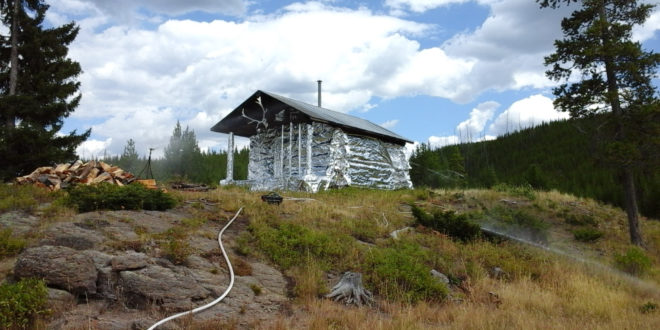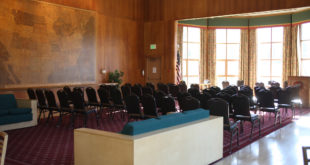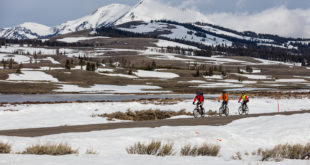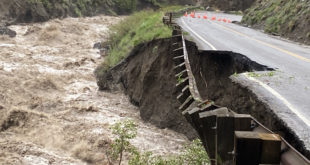Both Buffalo and Maple Fires have grown overnight in Yellowstone National Park.
Yesterday, we reported crews had discovered Buffalo Fire, which is burning on the Buffalo Plateau five miles northwest of Tower Junction and four miles south of the Park’s northern boundary. At that time, it was an acre in size. Now, according to a Yellowstone press release, Buffalo Fire has grown to 97 acres. Last night, crews mapped the fire using infrared scanners.
Maple Fire, meanwhile, burning eight miles northeast of West Yellowstone, has grown to 1,100 acres; we last reported the fire measured 501 acres. It is still moving to the northeast, away from the Gneiss Creek trail. Yesterday, crews gathered fuel samples to better understand how the fire is burning. Crews on the ground have taken precautionary measures in wrapping the Cougar Creek patrol cabin, which you can see above.
Both Buffalo and Maple Fires are burning in fire scars left by the 1988 Yellowstone fires—offering crews a chance to understand how the fires are moving through previously burned territory.
Finally, Fawn Fire, burning 11 miles west of Mammoth Hot Springs, is still burning at 936 acres.
According to the Park press release, all three fires are being managed using “a combination of monitoring and point-protection strategies.”
Visitors should anticipate smoke while travelling in the north and west portions of the Park, as well as along U.S. 191.
Stage 1 Fire Restrictions are still in place for Yellowstone National Park. There are no new trail and campsite closures to announce at this time.
And, of course, the Park would like to remind visitors that none of the fires pose any threat to any park facilities, both NPS- and concession-operated facilities.
 Yellowstone Insider Your Complete Guide to America's First National Park
Yellowstone Insider Your Complete Guide to America's First National Park





